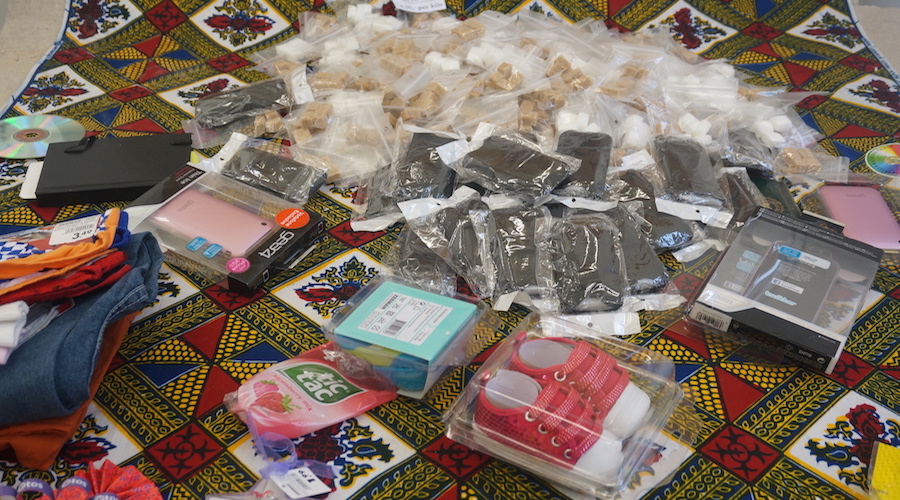56. Biennale – Padiglione della Repubblica dello Zimbabwe

Il progetto Pixels of Ubuntu/Unhu: Exploring all the different facets of social, physical and cultural identities of our contemporary societies from the past, present and future rappresenta la Repubblica dello Zimbabwe alla 56. Biennale di Venezia.
Comunicato stampa
The Zimbabwe Pavilion, commissioned by Mrs. Doreen Sibanda, the National Gallery of Zimbabwe's Executive Director, will be an exceptional moment in the National Gallery's endeavor to promote Zimbabwean art and culture internationally.The three artists will conceive a new complex of works, incorporating video, prints, drawings, objects, and sound for the six galleries of the Zimbabwe Pavilion. The national identity and its place in the global sphere has always been a source of inspiration for the Zimbabwean Pavilion at Venice and this year's theme Pixels of Ubuntu/Unhu – Exploring the social and cultural identities of the 21st century continues the interrogatory nature of the Zimbabwe Pavilion at la Biennale di Venezia.Chikonzero (Chiko) Chazunguza (b.1987, Harare) is a visual artist and provocateur, whose multidisciplinary artworks raise searching questions about the postcolonial condition and about the unstable role and nature of art in its postcolonial context. Amongst his most compelling works are those that reinstate for the viewer, a sense of ritual order and of life's deeper mysteries, alongside proffering incisive, yet subtle social and political analysis. Chiko deliberately sets out to re-connect with local modes of fabrication and visuality, exploring their areas of aesthetic overlap with Western traditions to produce new visual forms and new kinds of visual experiences. In his paintings, prints as well as in his installations he is known for experimenting with a variety of materials, including objects of everyday African life, challenging issues of subtle colonial conditions in Africa on land distribution, food insecurity, degradation of indigenous spirituality, traditional order and rituals. His latest body of work interrogates memory, history and identity culminating in Maputura the pace we want to be.Masimba Hwati (b. 1982, Harare ) is interested in the memory and energy of traditional objects and the space they occupy in the urban world. His work explores the transformation and evolvement of Indigenous knowledge systems. Masimba says, "I'm looking at how these systems co-exist with current paradigms .The idea of "Harmonic incongruence" and juxtaposition of esoteric cultural elements with Modern mainstream symbolism is an underpinning factor in this thought process. The Institution of Ubuntu is a universal moral and ethical code that transcends geography and cultures; it is quantum thinking expressed in human relations. It is the essential link of man to Divinity. In my work this idea is explored through my personal and cultural lens and is connected to a larger universal context". The dialogue contained in his work questions the "thinking" behind today's modern thought and explores the altruistic possibilities that exists in non-material cultures. His Urban totems series questions whether technology's pixilating of our Ubuntu/Unhu has enhanced or distorted our humanity.Gareth Nyandoro (b.1982, Bikita) combines images of vendors with found materials which he processes by employing idiosyncratic variations on traditional craft techniques. He weaves with paper. Nyandoro produces prints not by using an engraved copper plate, but by cutting directly into the paper, sponging ink onto it and finally removing the top layer of paper with tape so the ink is only left behind in the cuts. A technique he calls "KUCHEKACHEKA". He attempts to simulate the market environment by combining two-dimensional collages with three-dimensional objects. The fragile, ephemeral quality of his work references the temporary nature of the marketplace. Gareth's installations bring the two – dimensional and three - dimensional components together through drawing, props, and objects to create works reflecting his research in relation to space, narrative, or storytelling, and materials as they are altered and transferred. In Venice, he will work with these diverse aspects of his practice to create two distinct rooms, with common themes unifying and resonating in the entire space with the other artists, relating to the present condition of Zimbabwean identity. His Mushika Shika Yevanhu installations examine in minute detail whether the new age transitional marketplace and associated identities of the touts, vendors and audience have a lasting impact on our humanity, history and culture; whether they define who we are as a people. Commissioner: Doreen Sibanda
Curator: Raphael Chikukwa, Tafadzwa Gwetai
Scientific committee: Saki Mafundikwa, Biggie Samwanda, Fabian Kangai, Reverend Paul Damasane, Nontsikelelo Mutiti, Stephen Garan'anga, Dominic Benhura
Special event
Artists:
Chikonzero Chazunguza Masimba Hwati Gareth Nyandoro



